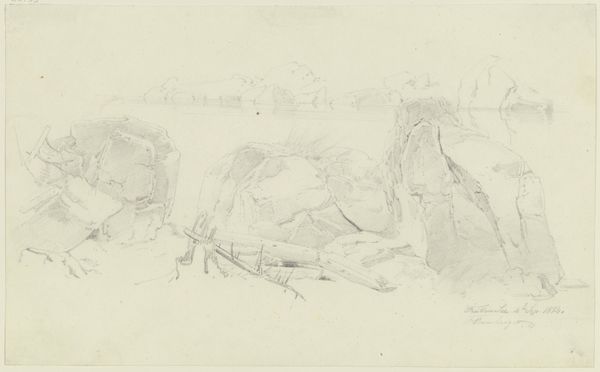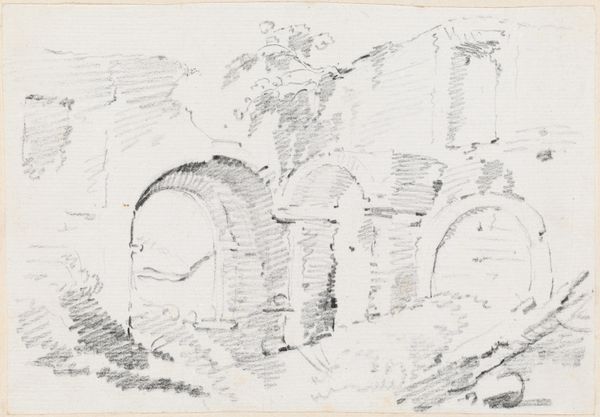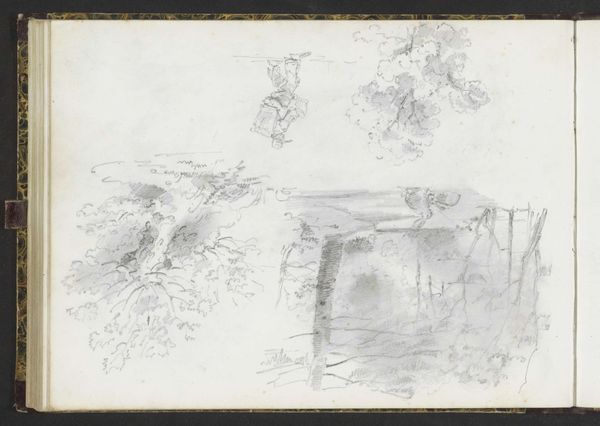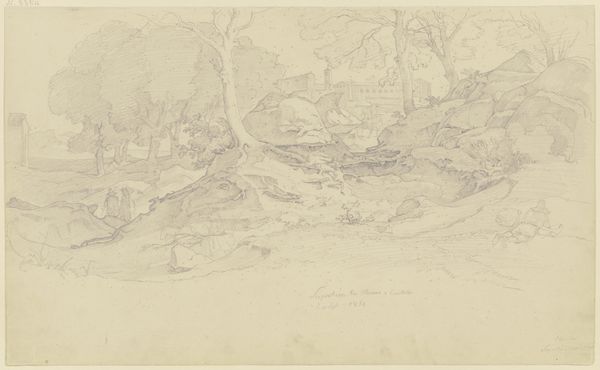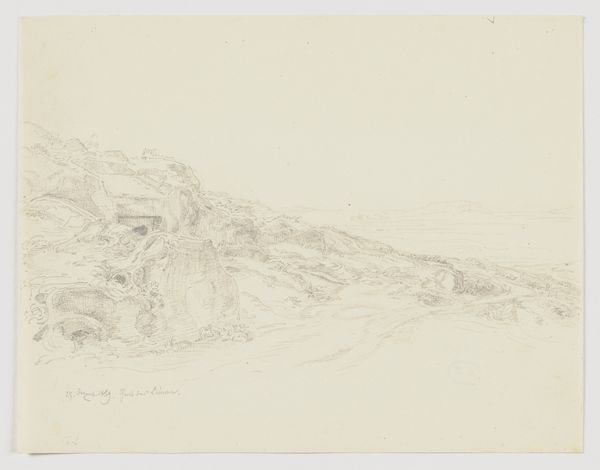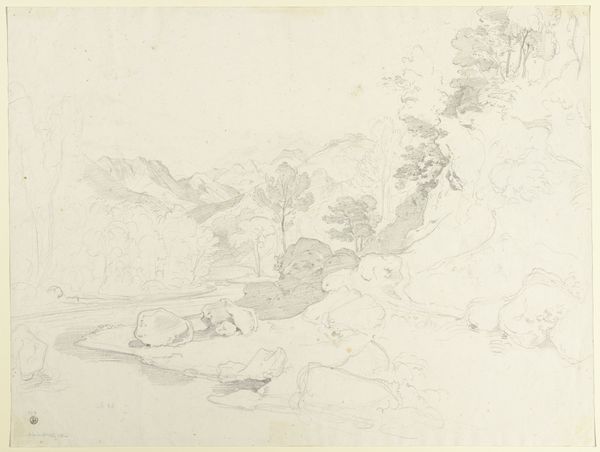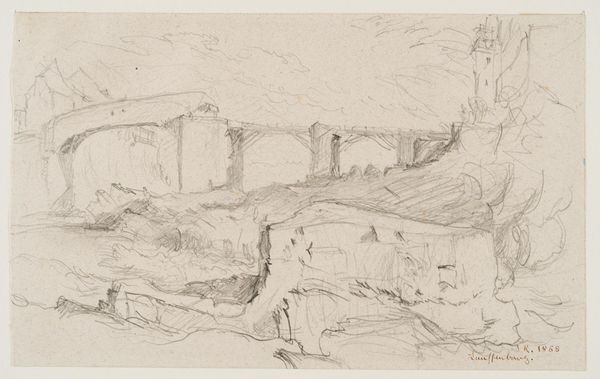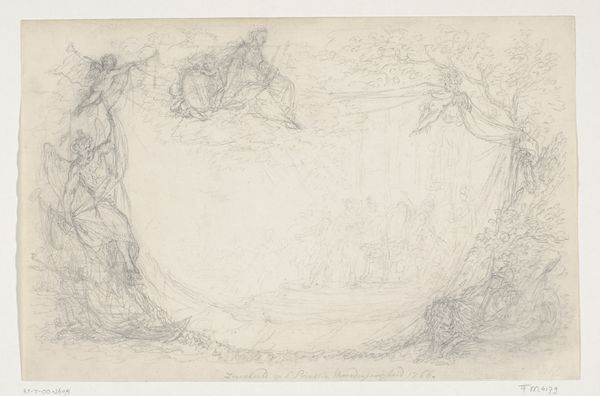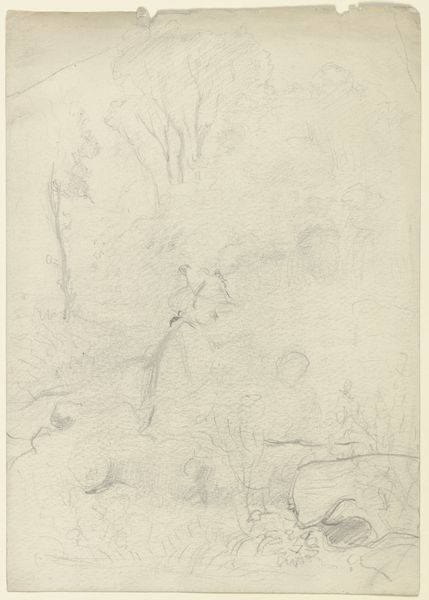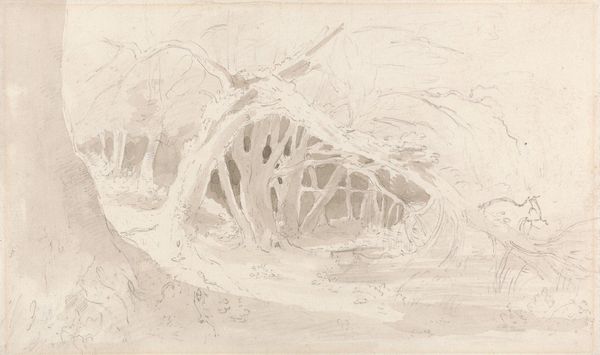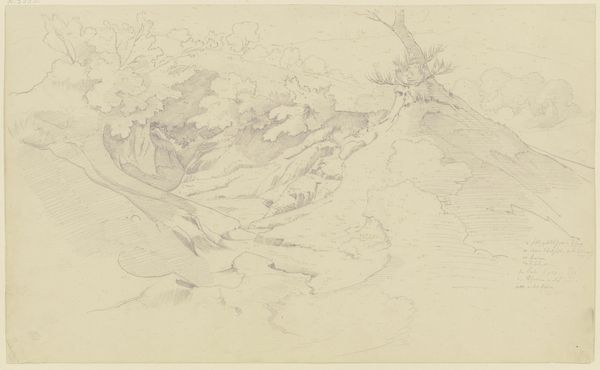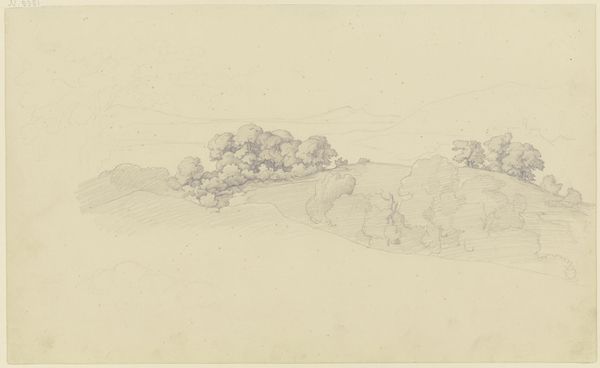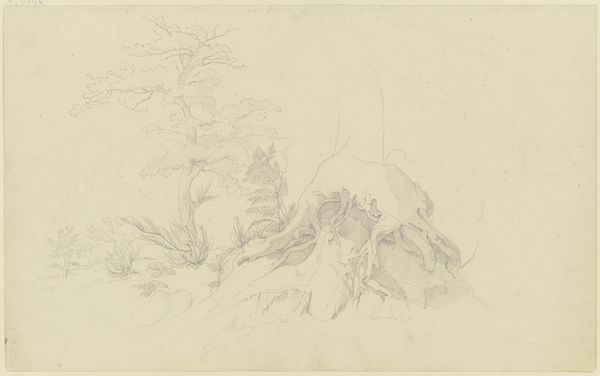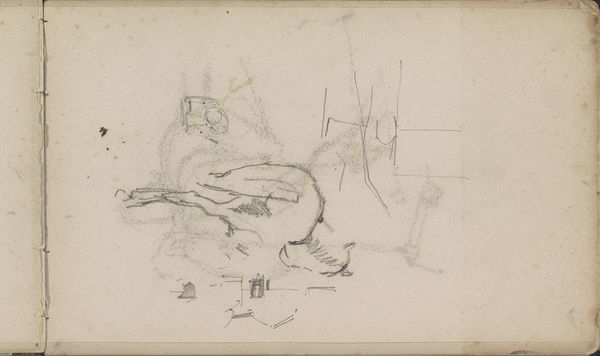
drawing, paper
#
drawing
#
landscape
#
paper
#
romanticism
Copyright: Public Domain
Curator: This is Ernst Fries' "Bei Ariccia, Brunnen bei einem Einsiedlerhäuschen," created in 1824. It's currently held here at the Städel Museum. Editor: It’s ethereal. The softness of the graphite almost obscures the architecture; there's a ghostly quality to it that makes the landscape seem like a half-remembered dream. Curator: Indeed. Fries was part of a generation grappling with shifting notions of the self and nature. Romanticism highly influenced the art produced then. Here we have an ordinary scene—a fountain, some rocks— imbued with this kind of spiritual weight. Note how Fries is giving precedence to emotion rather than scientific naturalism. Editor: The medium supports that well, I think. The starkness of a graphite drawing emphasizes the natural materials around this little structure and well, juxtaposing stone, wood, and the water source in this really intriguing manner. How would an ordinary viewer encounter this type of place and resource? The lack of bold color asks the viewer to dig a bit deeper and consider place in context with material. Curator: And don't forget, at this time, these types of drawings also functioned as a means of documentation for a landscape rapidly changing due to industrialization and urbanization. Fries gives us a glimpse into an untouched idyllic moment, while also contributing to an aesthetic, the Romantic landscape, that shapes public opinion of the natural world. Editor: Good point! There is almost a kind of careful extraction from an evolving society through this piece. Thinking of how drawing allows Fries to record minute details as source material, and the social context and purpose becomes an intricate part of the overall artistic method. It almost emphasizes the labor inherent to producing the art itself. Curator: Ultimately, Fries transports us, doesn’t he? Placing value in individual, emotional response rather than empirical observation. Editor: For me it’s a quiet piece about human connection to materials in the natural world. I’m thinking about how drawing on paper is a physical experience and connects with our engagement with these elements in a landscape.
Comments
No comments
Be the first to comment and join the conversation on the ultimate creative platform.
